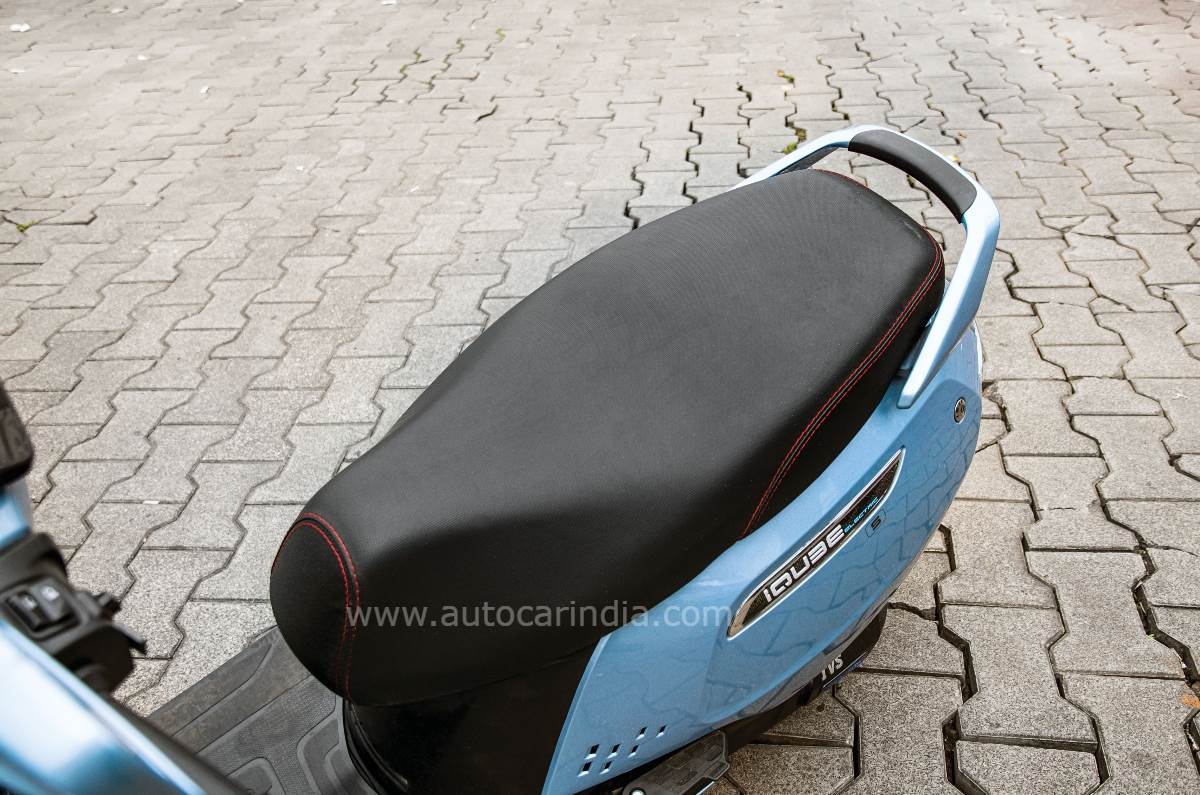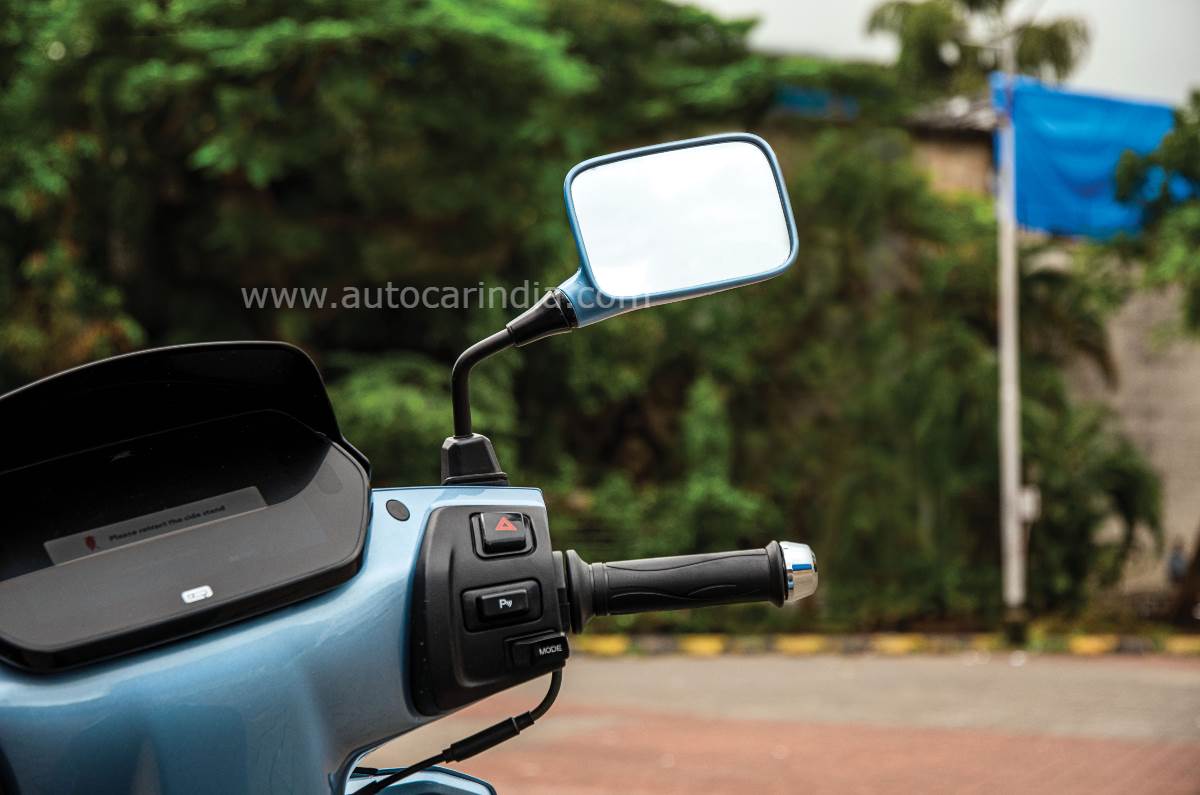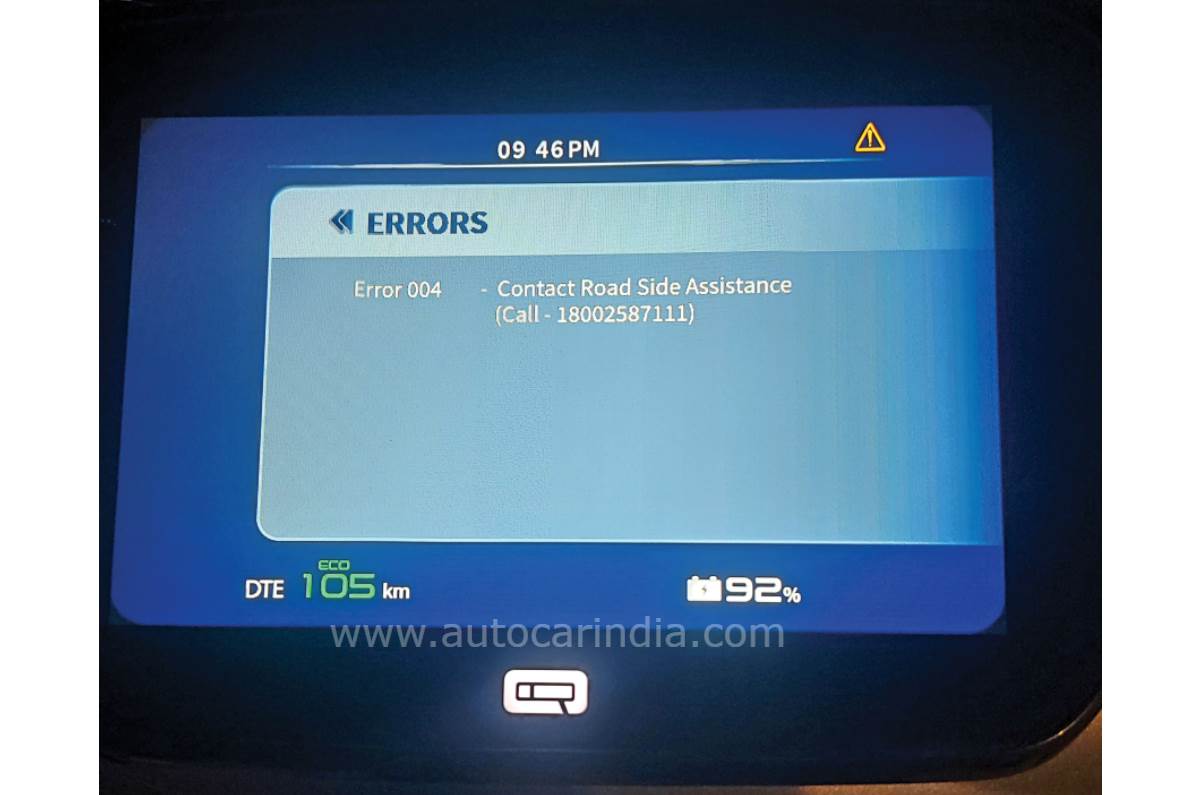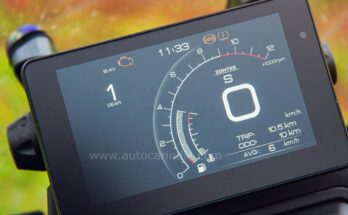TVS’ updated iQube S electric scooter joins our long-term fleet and is immediately put to the test.
I’ve had very limited experience with electric two-wheelers until it got to putting together the mega EV comparo. With range testing, performance testing and shooting, I got to spend a few hundred kilometres and a few days with Autocar India’s latest two-wheeler long-termer. And I must say, initial impressions have been good.
Our long-term TVS iQube is the mid-spec S variant, finished in the Mint Blue paint shade. Now, while I’m not particularly a fan of this colour, it’s nice that TVS does offer you a lot more options than it did with the older iQube, which was sold in White only.

Super silent motor makes for relaxed commuting.
I’m so used to ICE machines, perhaps, that the one thing which still surprises me with EVs in general is the lack of sound and vibrations. Just for context, I was commuting on our long-term Royal Enfield Scram before the iQube, so you can imagine how vastly different the experience is between the two. The iQube has an incredibly silent hub-mounted motor; there’s not even that whine that you now associate with EVs. And while some may not be a fan of this, I’ve grown to like this. With no sound and vibrations, the iQube has been making me feel very relaxed and peaceful on what is usually a jam-packed commute.
I’ve also grown to appreciate the fact that the iQube, unlike the Ola and Chetak (although it isn’t as aggressive as the Ola), doesn’t cut power when you press the brake. This makes darting in and out of gaps in traffic a breeze. I quite like the high-resolution screen too, and it’s operated via a joystick, which makes it convenient. However, the screen changes graphics when the motor switches to regen mode and you’re off the throttle, and this makes the screen flicker constantly in traffic. This can get quite irritating, especially in the dark. Switching the display to night mode helps, but unfortunately, this is something you have to manually do.

Seat is wide and comfortable for most riders.
I’m also happy to report that the seat is nice and comfortable, which took some of the pain out of riding for several hours in Mumbai traffic for the range test. And that’s not just the case for me, even Rishabh, who’s of a healthier build than me, found the seat comfy.

Mirrors look and feel a bit too low rent.
The build quality is largely good in most areas, but the mirrors and switchgear feel particularly low-rent. The Park assistant switch on our scooter has even become sticky and requires some effort to get it to pop back out. I also wish that TVS would have provided either a case for the charger or some way to wrap it neatly and keep it secure in the boot; right now the charger rattles around in the boot when you go through bumps.

Scooter shutdown due to a software bug.
These are all niggles, but we did have one more serious issue with the iQube in its first few days with us: the scooter abruptly switched off while Rishabh was riding it back home one night. The display showed an error message, suggested we contact roadside assistance, and simply refused to start again. We had the scooter towed to a TVS service centre who resolved the issue and returned it to us in five days. The issue was traced down to a software bug, which was resolved via a system reboot, according to the service centre. Since then, the iQube has covered hundreds of kilometres trouble-free. Hopefully things stay that way going forward.
Also see:
Source link


